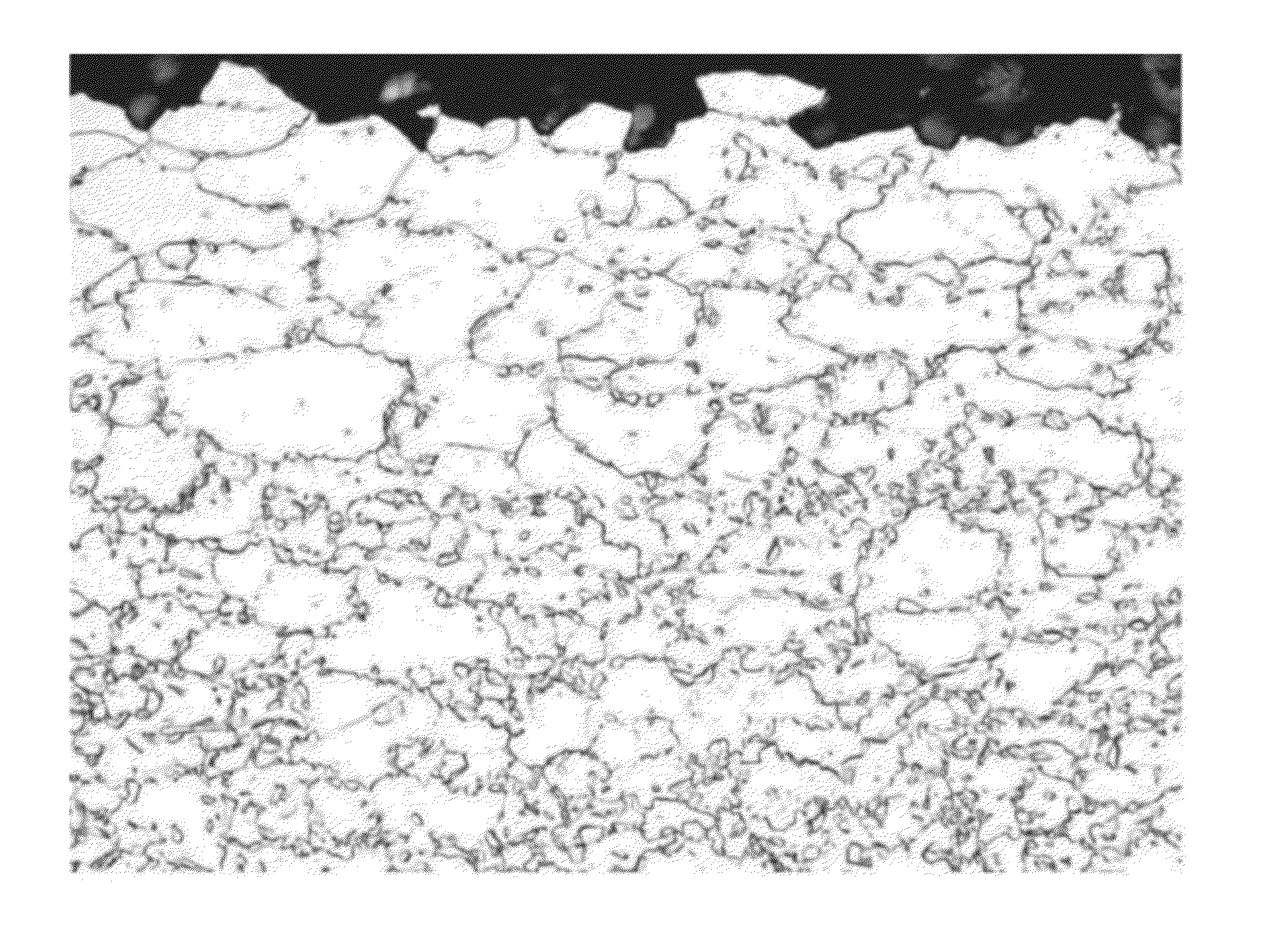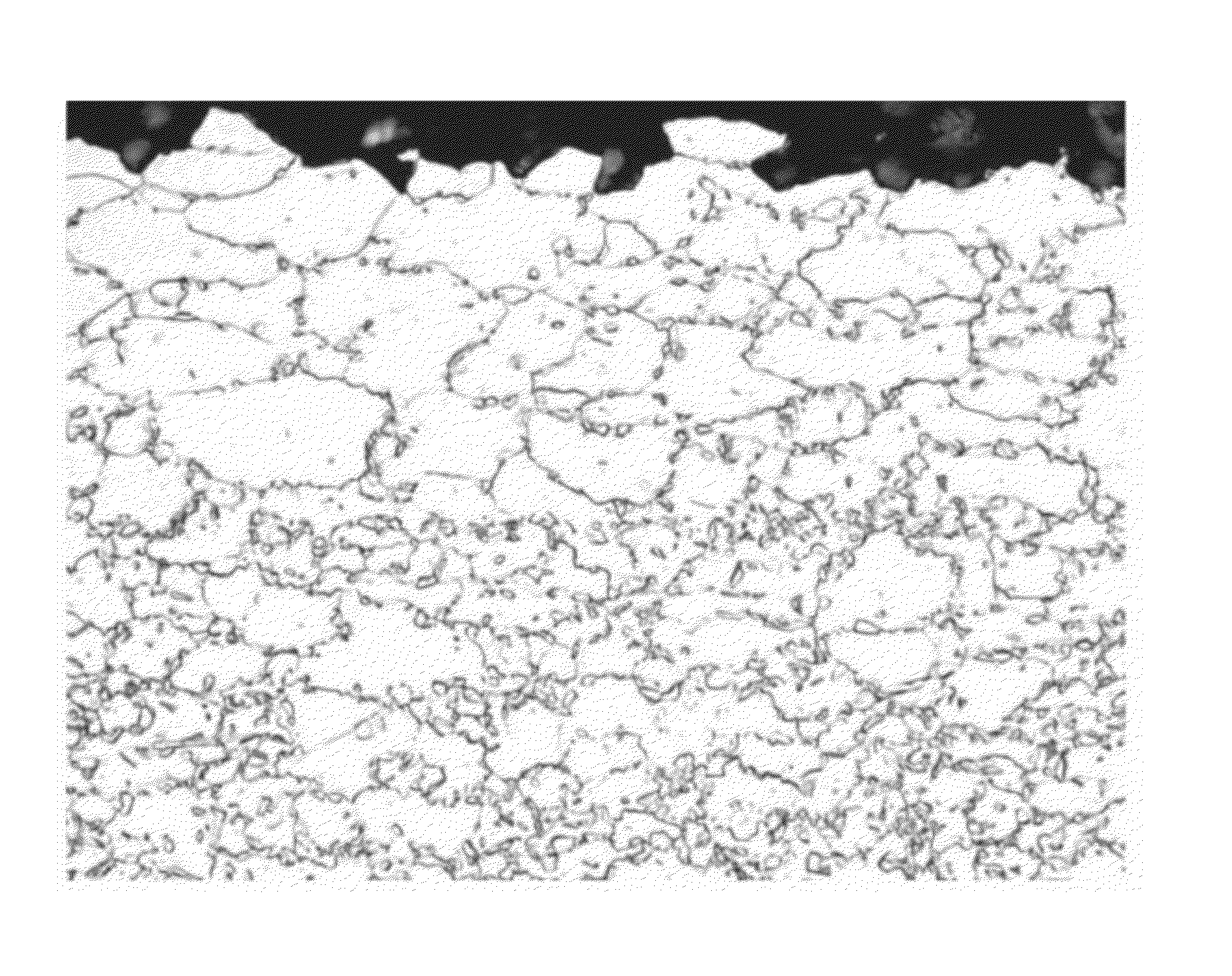High-strength galvanized steel sheet and method of manufacturing the same
a galvanized steel and high-strength technology, applied in the field of high-strength galvanized steel sheet, can solve the problems of oxides with poor wetting properties, prone to formation of non-plated portions, and retardation of the alloying reaction between zn and fe, etc., to achieve excellent bending properties, excellent fatigue durability, and excellent wetting properties
- Summary
- Abstract
- Description
- Claims
- Application Information
AI Technical Summary
Benefits of technology
Problems solved by technology
Method used
Image
Examples
first embodiment
[0050]Hereinafter, a first embodiment of the present invention will be described in detail.
[0051]Firstly, the reasons why the components of the steel sheet are limited will be described. Furthermore, % in the present invention refers to mass % unless otherwise specified.
[0052](Steel Sheet Components)
[0053]C is an essential element in a case in which increasing the strength of the steel sheet is attempted through structural strengthening which is achieved by martensite or residual austenite. The reason why the amount of C is set to 0.05% or more is that, when the amount of C is less than 0.05%, cementite or pearlite is liable to be generated in a galvanizing line in which it is difficult to quench the steel sheet from the annealing temperature using mist or water jets as a cooling medium, and it is difficult to secure the necessary tensile strength. In order to stably achieve a high strength of 770 MPa or more, the C amount is preferably set to more than 0.08%, and more preferably to...
example 1
[0104]Hereinafter, the embodiment will be described specifically using an example.
[0105]Continuous casting was carried out in a continuous casting facility provided with an electromagnetic brake and a wire supplying apparatus for adding an alloy at the molding section, thereby obtaining steels having the compositions as shown in Table 1. The electromagnetic force of the electromagnetic brake was set to 0.1 T to 1.0 T, and a Fe wire was used. The added amount of the Fe wire was adjusted using the cross-sectional area and supply rate of the Fe wire.
[0106]Next, slabs that were manufactured in the above manner and had an increased concentration of Fe in the surface layer portion were hot-rolled at a heating temperature of 1080° C. to 1150° C., a finishing completion temperature of 910° C. to 930° C., and a winding temperature of 580° C. to 690° C., thereby making a steel sheet having a sheet thickness of 4.0 mm. Furthermore, the slabs were pickled, then cold-rolled so as to be 2.0 mm in...
example 2
[0113]Continuous casting was carried out in a continuous casting facility provided with an electromagnetic brake and a wire supplying apparatus for adding an alloy at the molding section, and a slab having the composition as shown in the J row of Table 1 was manufactured. The electromagnetic force of the electromagnetic brake was set to 0.1 T to 1.0 T, and a Fe wire was used. The added amount of the Fe wire was adjusted using the cross-sectional area and supply rate of the Fe wire.
[0114]Next, the slab that was manufactured in the above manner and had a variety of thicknesses of concentrated Fe in the surface layer portion was hot-rolled at a heating temperature of 1080° C. to 1150° C., a finishing completion temperature of 910° C. to 930° C., and a winding temperature of 580° C. to 690° C., thereby making a sheet thickness of 4.0 mm. Furthermore, the slab was pickled, then, cold-rolled so as to be 2.0 mm in thickness, and subjected to galvanizing in a continuous galvanizing line. In...
PUM
| Property | Measurement | Unit |
|---|---|---|
| tensile strength | aaaaa | aaaaa |
| temperature | aaaaa | aaaaa |
| tensile strength | aaaaa | aaaaa |
Abstract
Description
Claims
Application Information
 Login to View More
Login to View More - R&D
- Intellectual Property
- Life Sciences
- Materials
- Tech Scout
- Unparalleled Data Quality
- Higher Quality Content
- 60% Fewer Hallucinations
Browse by: Latest US Patents, China's latest patents, Technical Efficacy Thesaurus, Application Domain, Technology Topic, Popular Technical Reports.
© 2025 PatSnap. All rights reserved.Legal|Privacy policy|Modern Slavery Act Transparency Statement|Sitemap|About US| Contact US: help@patsnap.com


